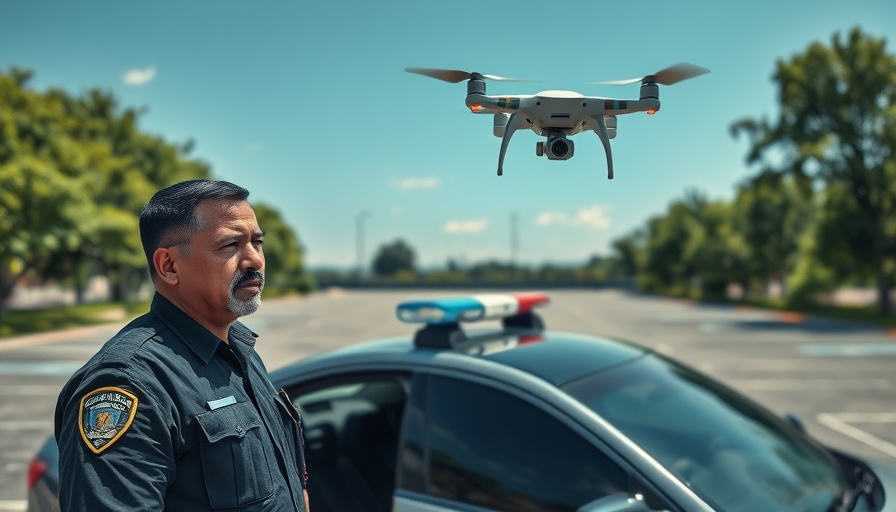
Understanding Drones: Revolutionizing Emergency Response
Drones have evolved from mere experimental gadgets to indispensable tools in emergency response, reshaping how police and fire departments operate across the United States. The recent Drone Thought Leadership Summit highlighted their profound impact, showcasing insights from leading public safety officials who confirm that drones are game changers in various operations, including search and rescue and tactical deployments.
Aerial Advantages: Enhanced Situational Awareness
One of the standout benefits of drone technology lies in the aerial perspective it offers. Deputy Chief Scott Carpenter from Charlottesville Fire emphasized that drones provide a vantage point for assessing emergency scenes in mere seconds. This quick assessment allows first responders to deploy resources more efficiently, ensuring that they are prepared for the situation at hand, thereby enhancing their safety and the safety of the community.
Real-Time Data for Better Decision-Making
According to Captain John English, many police departments, like Chula Vista’s innovative Drone as First Responder (DFR) program, have embraced drones to deliver real-time data directly to command staff. This rapid data acquisition is revolutionary in operational tactics, allowing officers to brace for what lies ahead before arriving on the scene. With drones responding within 90 seconds, officers can make informed decisions that not only protect their safety but also ensure a more measured approach in critical situations.
De-Escalation and Community Safety
An area of unexpected benefit is the role of drones in incident de-escalation. With the ability to gather detailed information, officers can approach potentially volatile situations with a greater understanding of what they will face—indicating whether a suspect is armed or assessing bystanders’ proximity. This foresight can significantly reduce the likelihood of force being necessary, thus safeguarding both police officers and community members.
Challenges Ahead: Regulations and Resources
Despite their benefits, the broader adoption of drone technology in emergency services faces notable challenges. State-level restrictions and FAA regulations remain significant hurdles impeding operations. Deputy Chief Michael Lighthiser pointed out that as drone technology progresses, it is crucial for regulations to evolve concurrently. Budgetary constraints also pose limitations, with many departments operating under tight budgets, which restricts their investment in this vital technology.
Future of Drone Integration in Public Safety
There is a pressing need for collaborative efforts across departments to maximize the potential of drone technology. Addressing airspace management and bolstering staffing and budget allocations are essential steps to fully realize the capabilities of drones. Chief Charles Werner emphasizes the importance of careful planning and resource-sharing among agencies to stay at the forefront of this technological shift.
As public safety officials continue to recognize the transformative power of drones, it is anticipated that these tools will not only enhance operational effectiveness but also strengthen community relations.
As you consider the implications of these advancements in drone technology, reflect on how innovations can shape safer communities and more effective emergency responses. Understanding these dynamics will empower you to advocate for progressive changes in your local law enforcement and emergency services.
 Add Row
Add Row  Add
Add 




Write A Comment